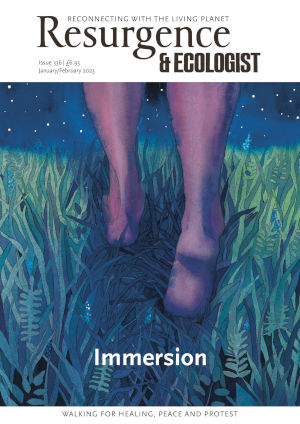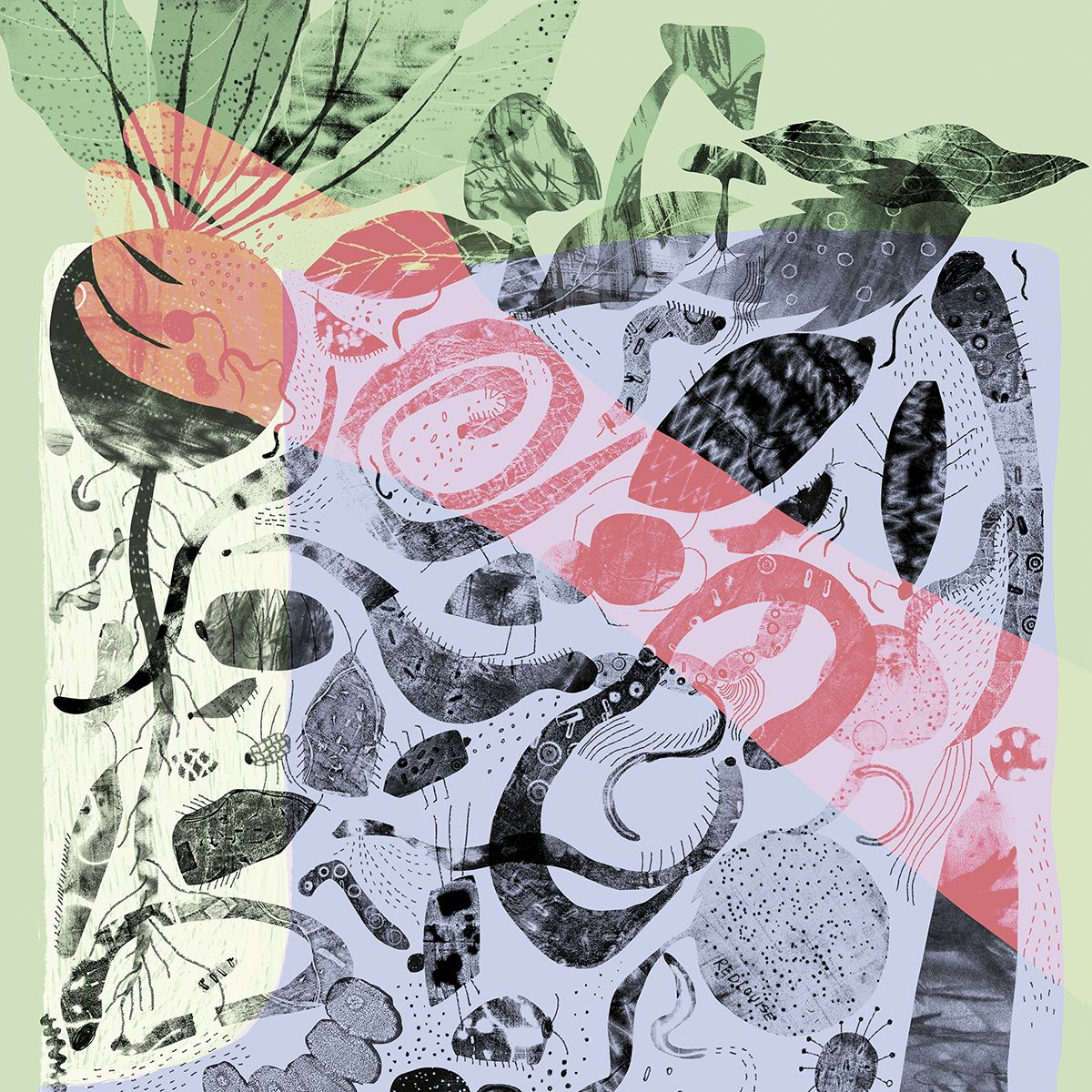I arrive at lunchtime at the Art and Nature Foundation in Nantesbuch, Bavaria. Standing beside the impressive Long House, my eyes drift over the undulating landscape. It is peaceful – the buzzing of insects mixing with the rumbling of a tractor turning freshly cut grass. As I look south towards the Austrian Alps, I try to imagine the massive glaciers that once reached out and swallowed this place in ice. But on a day like today that seems impossible, and I silently urge the soft breeze to get some oomph behind it.
I turn to see Marcus Maeder, acoustic ecologist and sound artist, approaching from across the car park. He’s tasked with assessing the health and sustainability of the foundation’s land via eco-acoustics, and he’s invited me to come along to check on his onsite recorders. Dressed in long khakis and shin-high wellington boots, I wonder what I’m in for. As we straddle our e-bikes, he jokes in crisp Swiss-English, “All the boots and shirts and stuff, you will be sweating.”
We whizz from hilltop to wet meadow, spruce forest and moor to cultivated fields, permaculture gardens and rewilded grasslands. At each location, we ditch the e-bikes and travel on foot to reach the recorders. The sensors used to capture above-ground sound are elevated, but others are placed in the soil, and it is these, developed by Maeder and his colleagues, that are breaking new ground in the field of bio-acoustics.
“We stick [the needle] into the soil and it’s like an antenna for sound waves,” Maeder explains, holding up the device. Using this equipment, he measures the acoustic signals of soil organisms: the more complex the soundscape, the more biodiverse and healthy the soil ecosystem.
As we walk along an intensively cultivated field, a tractor rumbles past. “That’s a big problem,” Maeder says, nodding towards it. “These soils are extremely sensitive to things like heavy machinery.”
I’m curious to know how he talks about unsustainable farming practices with the locals of Nantesbuch. In places where farming the same land has continued through generations, discussions about the agricultural landscape become discussions about the cultural landscape – a sensitive topic for an outsider to broach. According to Maeder, to find the right tone, you first need to change people’s perception of soil. And to do this, science must become art. “That’s my trick, at least,” he chuckles.
I think back to having been completely immersed in a world delightfully alien and alive when I visited Maeder’s Sounding Soil installation in a park outside of Zurich: a blacked-out shipping container where the only light came from a monitor on which you could choose recordings from a map of Switzerland. A soundtrack was already playing, so I closed my eyes and listened.
Croaking? Bubbling? Munching? What is that? I wondered, as my mind struggled to decipher what I was hearing. The increasing scuttle of an approaching creature sent my heart racing, and I flinched. After a while, the empty space around my body felt odd. Where was the weight of earth, the scratching of critters, the smell of musky dirt? At one point, some children ran past outside, and I sensed both the above and the below ground at once, my body split between. I was mesmerised, sitting there in the dark, immersed in a world that was delightfully alien and alive. The sounds of soils aren’t just enhancing our knowledge of biodiversity. They’re giving a voice to a realm that, to most of us, sits intangible and imperceptible beneath our feet.
After a few hours of biking and rambling through the landscape, we return to the Long House to listen to some of Maeder’s recordings. I ditch my mud-soaked boots outside as Maeder sets up his laptop. I ask what are the strangest sounds he has ever heard in soils. “One example is actually the first recording I made,” he says. “It was in the Swiss mountains, five years ago.” He clicks on the recording and the room fills with busy activity. But then, a clear, distant “brr-brr”, pause, “brr-brr”. Like a vibrating phone muffled under a couch cushion. Then, a few seconds later, a closer, higher-pitched “brr-brr”. A call and response, Maeder explains, made by small ground-dwelling cicadas vibrating their bodies and using the soil as a medium for their conversation.
But it’s not just underground organisms that can be heard in the soil. From the Nantesbuch recordings I hear the whisper of wind, the patter of rainfall, the chirping of birds. I begin to see soil as a membrane that excludes us surface-bound creatures but opens itself to water, nutrients, other organisms, and sound too. I think back to my experience in the art installation, caught between the above and below – had I been sensing something akin to the soil’s living surface?
Then Maeder plays something I am not expecting. The unmistakable high whine, roar and rumble of a jet engine. When it blasted past him in the Swiss Alps, the soil organisms stopped speaking. He has observed the same with farm machinery. Once a tractor’s engine noise is emitted into soil for longer than 10 to 20 minutes, the soil fauna become completely quiet. According to Maeder, we are barely aware of how sensitive soils are to noise pollution and how we move relative to the subsurface realm. “We’re always a bit like the elephant in the porcelain shop,” he says.
We let our conversation ramble and fade, ruminating over the importance of nurturing soil, not just for food production, but also because it’s a world teeming with life. Perhaps deepening our relationship with soil requires moments of intimacy brought about through sensory experiences like sound. Something that shifts our perspective makes the intangible tangible, the unknown known.
I say goodbye to Maeder, collect my now crusty socks and shoes, and turn away from the Long House. As I walk towards my car, I can’t help but wonder what is happening beneath my feet. Can they hear me in that wonderful world below?
I tread as lightly as I can.








